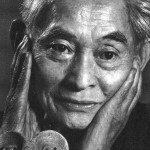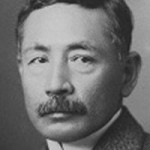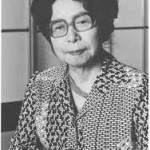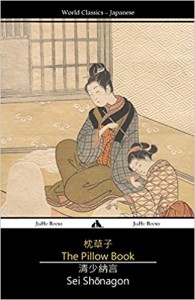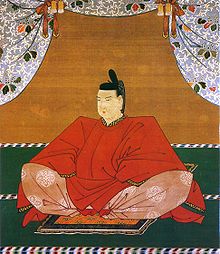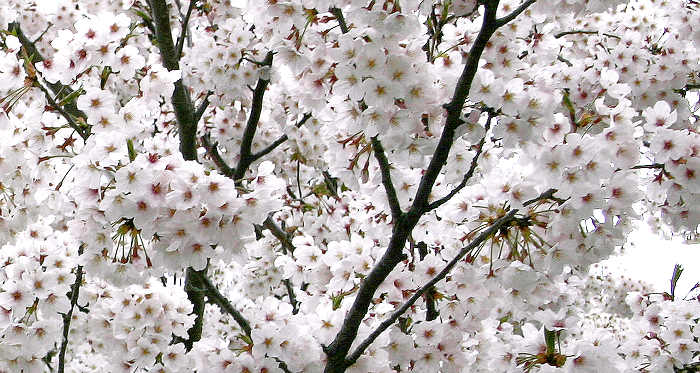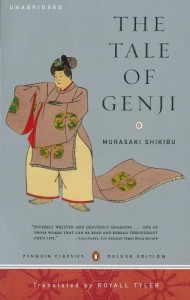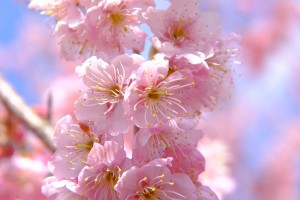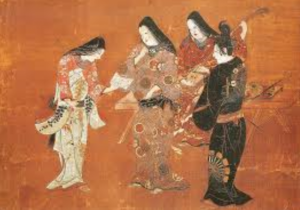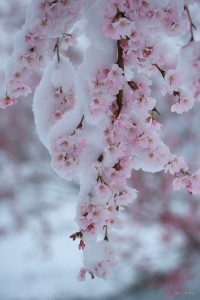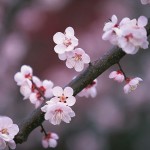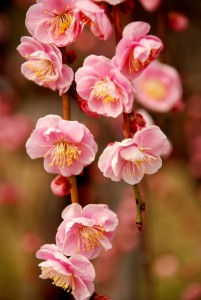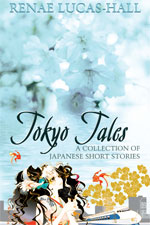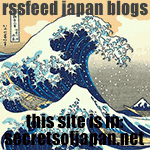Have you ever seen someone reading a book on public transport when suddenly they’ll look up and stare into space for five minutes before returning their gaze to the pages or eBook in front of them, seemingly engrossed in the story? Maybe they’re reading a fascinating and thought-provoking novel by a famous Japanese author like Haruki Murakami and one beautifully written line or paragraph may have reminded the reader of something really special in their past. Or, the meaningful words they’ve just read could have sparked a new realisation or understanding of the world in which they live and they need a few minutes to absorb the implications of an expression.
Books by Japanese novelists and the quotes taken from these books tend to be poignant, profound and give you pause for thought. If you’re looking for the meaning of life then this is where you should start but I’m warning you — it may be a bumpy ride to enlightenment. A lot of stories by Japanese authors were written for more mature minds. Their themes deal with the impermanence of life, highly emotional or tense relationships, death, fatalistic emotions, misery and stark contrasts in everyday life. Some of the quotes below are very beautiful and refined while others may seem a bit extreme, such as Natsume Sōseki’s rather ominous description of a businessman.
I hope you enjoy reading these quotes and who knows? You might decide to buy a book written by one of these famous Japanese novelists. Next time you’re reading this book on a train, bus or plane maybe you’ll be the person who looks up from their book and stares pensively out the window as you think about what you’ve just read, the depth of the words on the paper or screen in front of you and how the story has inspired you to think outside the box.
Haruki Murakami (1949 – present)
1. “As time goes on, you’ll understand. What lasts, lasts; what doesn’t, doesn’t. Time solves most things. And what time can’t solve, you have to solve yourself.” (Dance Dance Dance (The Rat, #4))
2. “That’s what the world is, after all: an endless battle of contrasting memories.” (1Q84)
3. “Pain is inevitable. Suffering is optional.” (What I Talk About When I Talk About Running)
Jun’ichirō Tanizaki (1886 – 1965)
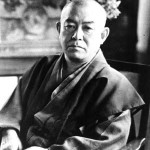 4. “With lacquerware, there is an extra beauty in that moment between removing the lid and lifting the bowl to the mouth, when one gazes at the still, silent liquid in the dark depths of the bowl, its colour hardly differing from that of the bowl itself. What lies within the darkness one cannot distinguish, but the palm senses the gentle movements of the liquid, vapour rises from within, forming droplets on the rim, and the fragrance carried upon the vapour brings a delicate anticipation … a moment of mystery, it might almost be called, a moment of trance.” (In Praise of Shadows)
4. “With lacquerware, there is an extra beauty in that moment between removing the lid and lifting the bowl to the mouth, when one gazes at the still, silent liquid in the dark depths of the bowl, its colour hardly differing from that of the bowl itself. What lies within the darkness one cannot distinguish, but the palm senses the gentle movements of the liquid, vapour rises from within, forming droplets on the rim, and the fragrance carried upon the vapour brings a delicate anticipation … a moment of mystery, it might almost be called, a moment of trance.” (In Praise of Shadows)
5. “The ancients waited for cherry blossoms, grieved when they were gone, and lamented their passing in countless poems. How very ordinary the poems had seemed to Sachiko when she read them as a girl, but now she knew, as well as one could know, that grieving over fallen cherry blossoms was more than a fad or convention.” (The Makioka Sisters)
Yukio Mishima (1925 – 1970)
6. “Yet how strange a thing is the beauty of music! The brief beauty that the player brings into being transforms a given period of time into pure continuance; it is certain never to be repeated; like the existence of dayflies and other such short-lived creatures, beauty is a perfect abstraction and creation of life itself. Nothing is so similar to life as music.” (The Temple of the Golden Pavilion)
7. “The past does not only draw us back to the past. There are certain memories of the past that have strong steel springs and, when we who live in the present touch them, they are suddenly stretched taut and then they propel us into the future.” (The Temple of the Golden Pavilion)
Kazuo Ishiguro (1954 – present)
8. “Many of our deepest motives come, not from an adult logic of how things work in the world, but out of something that is frozen in childhood.”
Yasunari Kawabata (1899 – 1972)
9. “Time flows in the same way for all human beings; every human being flows through time in a different way.”
Natsume Sōseki (1867 – 1916)
10. “Admittedly, there’s a certain coarseness about [businessmen]; for there’s no point in even trying to be [one] unless your love for money is so absolute that you’re ready to accompany it on the walk to a double suicide. For money, believe you me, is a hard mistress, and none of her lovers are let off lightly. As a matter of fact, I’ve just been visiting a businessman and, according to him, the only way to succeed is to practice the “triangled” technique: try to escape your obligations, annihilate your kindly feelings, and geld yourself of the sense of shame.”
Banana Yoshimoto (1964 – present)
11. “Was that what it means to be an adult, to live with ugly ambiguities?” (Kitchen)
Natsuo Kirino (1951 – present)
12. “It wasn’t so much that I was afraid of the place itself, but I was afraid of the creatures who masqueraded as people.” (Real World)
13. “Friends are a weird thing. It seems like they know all about you, but then they don’t understand you at all.”
(Real World)
Hiromi Kawakami (1958 – present)
14. “Would you consider a relationship with me, based on a premise of love?” (The Briefcase)
Fumiko Enchi (1905 – 1986)
15. “Actions do not betray, but language is filled with the danger of betrayal at any instant. This quality is what makes language both infinitely beautiful and infinitely frightening.”
Kanae Minato (1973 – present)
16. “The world you live in is much bigger than that. If the place in which you find yourself is too painful, I say you should be free to seek another, less painful place of refuge. There is no shame in seeking a safe place. I want you to believe that somewhere in this wide world there is a place for you, a safe haven.” (Confessions)
17. “Whenever you’re worried or sad about something, I want you to know you can talk to me. But when you can’t or don’t want to, you should try writing in here. Just imagine you’re talking to the person you trust most in the whole world. It’s amazing how much the human brain is able to remember, how much you hold onto in life, but when you write something down, you can forget about it—you no longer have to hold it inside. Remember the good things; write the bad ones down in here and forget about them.” (Confessions)
Osamu Dazai (1909 – 1948)
18. “I am convinced that human life is filled with many pure, happy, serene examples of insincerity, truly splendid of their kind-of people deceiving one another without (strangely enough) any wounds being inflicted, of people who seem unaware even that they are deceiving one another.” (No Longer Human)
Ryūnosuke Akutagawa (1892 – 1927)
19. “A man sometimes devotes his life to a desire which he is not sure will ever be fulfilled. Those who laugh at this folly are, after all, no more than mere spectators of life.” (Rashomon and Other Stories)
Ryū Murakami (1952 – present)
 20. “When you’re in an extreme situation you tend to avoid facing it by getting caught up in little details. Like a guy who’s decided to commit suicide and boards a train only to become obsessed with whether he remembered to lock the door when he left home.” (In the Miso Soup)
20. “When you’re in an extreme situation you tend to avoid facing it by getting caught up in little details. Like a guy who’s decided to commit suicide and boards a train only to become obsessed with whether he remembered to lock the door when he left home.” (In the Miso Soup)
Murasaki Shikibu (c. 973 or 978 – c. 1014 or 1031)
21. “Yes, the cherry trees put this truth very plainly: none of the glory of blossoms and autumn leaves lasts long in this fleeting world.” (The Tale of Genji)
You can find all of the above quotes on Goodreads, except for the quote by Kazuo Ishiguro from BrainyQuote and the quote by Lady Murasaki which I plucked straight out of ‘The Tale of Genji’.











